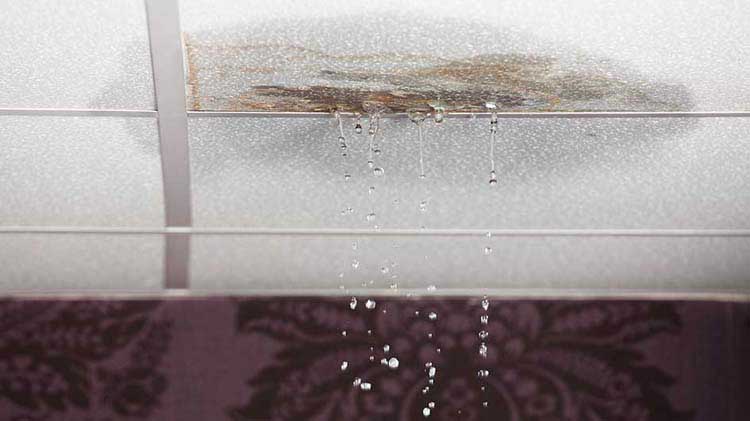Learning About The Factors Behind Water Seepage Happen Frequently at Home
Learning About The Factors Behind Water Seepage Happen Frequently at Home
Blog Article
How do you feel on the subject of Top Causes of Home Water Leaks?

Leakages not just trigger waste of water yet can also trigger unnecessary damage to your residence and promote undesirable natural development. By comprehending and also looking for day-to-day situations that trigger leakages, you can protect your residence from future leakages and unnecessary damage.
Intruding roots
A lot of water leakages begin outside your house as opposed to inside it. If you observe an unexpected decline in water stress, claim in your tap, take time to go out and analyze your backyard. You might notice wet patches or sinkholes in your backyard, and that could suggest that tree roots are invading water lines causing water to permeate out. You can have your plumber look for invasion, particularly if you have trees or shrubs near your home.
Corroded water supply
This might be the cause of discoloration or warping on your water pipelines. If our plumbing system is old, take into consideration changing the pipelines given that they are at a greater threat of deterioration than the more recent versions.
Malfunctioning Pipeline Joints
The factor at which your pipelines link is often the weakest link in the waterline. Pipe joints can wear away with time, causing water leakages. The majority of pipeline joints are not quickly visible. If you have loud pipes that make ticking or banging noises, specifically when the hot water is turned on, your pipeline joints are most likely under a great deal of pressure. It is advisable to have your plumber evaluate your system yearly.
Immediate temperature level changes.
Severe temperature changes in our pipelines can cause them to expand and also contract suddenly. This development and contraction might create splits in the pipes, especially if the temperature are below freezing. If you kept an eye on how your plumbing works, it would be best. The presence of the previously discussed situations often suggests a high danger.
Poor Water Connectors
At times, a leak can be brought on by loose pipes and also pipes that supply your devices. More often than not, changing is what causes the loosened water Connections. You could discover when it comes to a cleaning maker, a pipe might spring a leak due to shaking during the spin cycle. In case of a water links leak, you may notice water running directly from the supply line or pools around your appliances.
Blocked Drains
Obstructed drains may be irritating and also inconveniencing, yet they can occasionally wind up causing an overflow resulting in break pipelines. Keep removing any type of products that might go down your drains pipes that could obstruct them to stay clear of such troubles.
All the above are root causes of leakages but not all water leakages arise from plumbing leaks; some leakages could originate from roofing leakages. All leakages must be repaired promptly to prevent water damages.
Leaks not just cause waste of water but can also cause unneeded damage to your home and promote unwanted natural development. By looking as well as comprehending for everyday scenarios that cause leakages, you can protect your house from future leaks and unnecessary damages. Today, we will certainly look at six leak creates that might be creating your pipes to leak.
At times, a leakage can be caused by loosened hose pipes as well as pipelines that supply your appliances. In instance of a water links leak, you may see water running straight from the supply line or pools around your devices.
How To Check For Water Leak In Your Home
How To Check for Leaks
The average household's leaks can account for nearly 10,000 gallons of water wasted every year and ten percent of homes have leaks that waste 90 gallons or more per day. Common types of leaks found in the home are worn toilet flappers, dripping faucets, and other leaking valves. These types of leaks are often easy to fix, requiring only a few tools and hardware that can pay for themselves in water savings. Fixing easily corrected household water leaks can save homeowners about 10 percent on their water bills.
To check for leaks in your home, you first need to determine whether you're wasting water and then identify the source of the leak. Here are some tips for finding leaks:
Take a look at your water usage during a colder month, such as January or February. If a family of four exceeds 12,000 gallons per month, there are serious leaks.
Check your water meter before and after a two-hour period when no water is being used. If the meter changes at all, you probably have a leak.
Identify toilet leaks by placing a drop of food coloring in the toilet tank. If any color shows up in the bowl after 10 minutes, you have a leak. (Be sure to flush immediately after the experiment to avoid staining the tank.)
Examine faucet gaskets and pipe fittings for any water on the outside of the pipe to check for surface leaks.
Undetected water leaks can happen without the home or business owner even realizing. If you suspect a water leak, but not able to find the source. It is time to contact a professional water leak detection service, The Leak Doctor.
How To Find a Water Leak In Your Home
https://www.leakdoctor.com/blog/How-To-Check-For-Water-Leak-In-Your-Home_AE197.html

Hopefully you liked our topic on How to detect water leaks in your home. Thank you so much for taking a few minutes to browse our posting. Sharing is nice. You won't know, you may very well be doing someone a favor. Thanks for taking the time to read it.
Damage control? Ring! Report this page